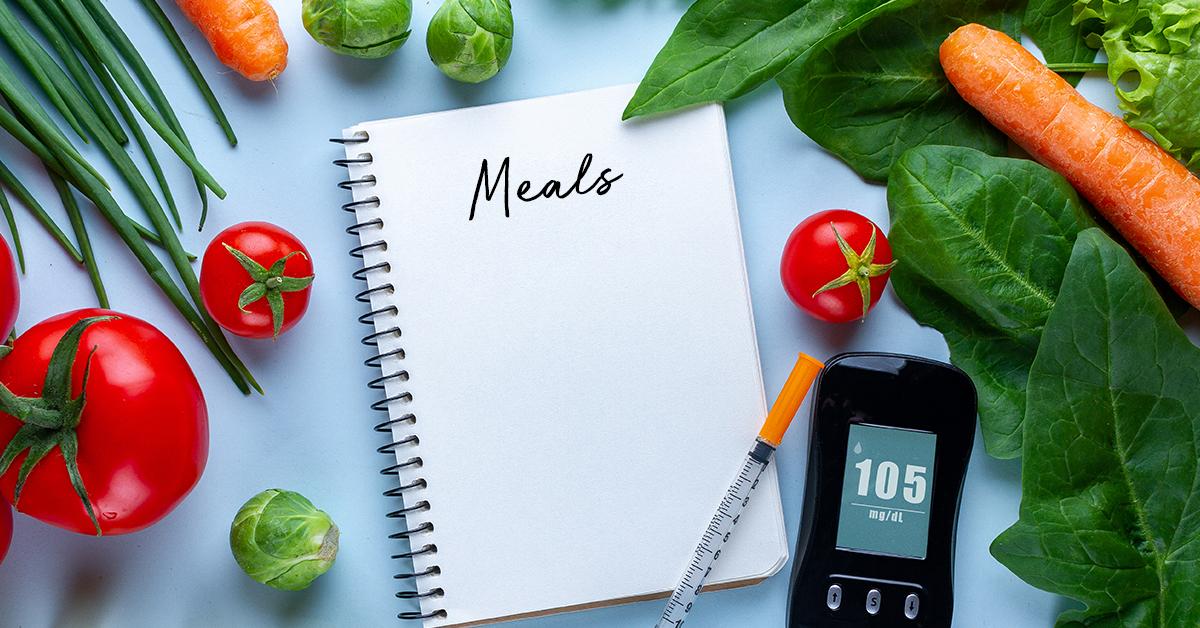Contact Us




Diabetes is a hard thing to deal with because it can be unpredictable. Tons of medications and a strict lifestyle can bring it under control, but diabetic patients must follow a routine.
Start your day by releasing the toxins from your body by drinking a glass of lukewarm water. Additionally, eat a spoonful of soaked fenugreek seeds to balance your sugar level.
For the most important meal of the day, start by drinking some buttermilk. A whole-wheat bread/chapati, egg white omelet, and a few vegetables will provide the perfect balance in nutrients. You can also eat some wheat flakes or vegetable oats with milk instead.
Take a 2-hour break after your breakfast, and then eat this mid-morning snack. As a diabetes patient, you must avoid long gaps between meals. Eat a handful of roasted chana with a cup of green tea or whole fruit.
A lunch should fulfill your hunger until the evening, which is why it can get slightly heavy. There are three options to customize this meal according to your appetite and willingness to cook. A large bowl of seasoned vegetables, a bowl of dal/ black chana with 2-3 chapatis will be quite fulfilling. You can switch those lentils with chicken/fish or mixed sprouts.
If you are not feeling hungry, then eat a bowl full of vegetable oats with curd.
Lastly, you can switch the chapatis with brown rice and add a bowl of cucumber+tomato salad if you are more hungry.
It will be beneficial to use several different vegetables in your diet instead of sticking to a few.
Take this meal around 4-5 pm, which is a few hours after your lunch. Start with eating a fruit (preferably different from the one you ate in mid-morning). Options other than fruits include roasted/boiled chana, Khakra, or buttermilk. You can also prepare a healthy salad by mixing puffed rice, cucumber, tomato, green peas, onion, and coriander. If you are craving a hearty meal, prepare a sandwich using whole wheat bread (without butter, cheese, and mayonnaise).
Elder care and diabetes management are all about eating the right foods. Start your dinner with a bowl of spinach/ mustard-saag/ greens/ green soya or green chana. You can also add some pieces of chicken and fish or have a mix of everything. Then eat a bowl of mixed seasonal vegetables with some chapatis. Finish your dinner with a small bowl of salad or sprouts.
On days when you are not feeling hungry, eat a bowl of vegetables and some soup.
On other days, you can switch the regular chapati for a multigrain roti.
The bottom line is to avoid starchy foods like potatoes, Kabuli chana, white rice, Arbi, and Jimmikand.
Finally, eat a light snack of a nut-mix before heading to sleep, like walnuts, almonds, cashews, and others. You can also add a glass of warm, toned milk with saffron or turmeric to this before-bed meal as a means of getting good sleep.
The wrong diet and genetics are significant causes of diabetes mellitus, but one can still control the condition. Rectifying one’s diet is an efficient way to cope with diabetes. Refer to this list of food for diabetic patients below to deal effectively with diabetes.
You can find whole grains like Bajra, Jowar, Wheat, Kuttu, and Black Gram in any store in India. These grains are protein and fiber-rich but have low sugar levels, and it is the perfect combination for diabetic patients. However, ensure to include more vegetables than whole grains in your diet.
Switching to brown rice from regular white rice can take time, but the benefits are worth the effort. It has a low glycaemic index and other nutrients that white rice does not have.
Fibrous veggies like spinach, beans, Karela, and peas are a lifesaver for diabetic patients. These foods maintain healthy bowel movements and keep the stomach filled for longer.
Pulses and legumes have a low glycaemic index and provide plenty of proteins. Lean meat like sardines, mackerel, tuna, salmon, and chicken can give the much-needed kick to your salads. However, remember not to deep fry these meats to avoid increasing your cholesterol levels.
Nuts are a high source of proteins, omega-3 fatty acids, and fibers, so they are a perfect addition to your diet. Eating a handful of walnuts, almonds, pistachios, and peanuts can immediately curb your hunger and control sugar levels. With the help of Samvedna care, you are all set to manage diabetes healthily. Remember, diabetes does not have to be debilitating if you maintain the right diet plan. The above Indian diet chart will also help prevent diabetes-related complications.